Grow Cucumbers Small Spaces? Absolutely! Imagine biting into a crisp, refreshing cucumber you nurtured yourself, even if you only have a tiny balcony or patio. For centuries, cultivating cucumbers has been a symbol of resourcefulness and fresh, healthy eating. From ancient Roman gardens to modern-day urban farms, people have always found ways to enjoy this versatile vegetable.
But let’s face it, not everyone has acres of land to dedicate to a sprawling cucumber patch. That’s where these ingenious DIY tricks and hacks come in! I’m here to show you that you don’t need a huge garden to enjoy the satisfaction of harvesting your own cucumbers.
This article is packed with simple, effective methods to grow cucumbers small spaces, maximizing your yield without sacrificing precious square footage. We’ll explore vertical gardening techniques, container selection, and clever trellising ideas that will transform your limited space into a thriving cucumber oasis. So, ditch the store-bought cucumbers and get ready to embark on a rewarding gardening adventure – even if it’s just on your windowsill!
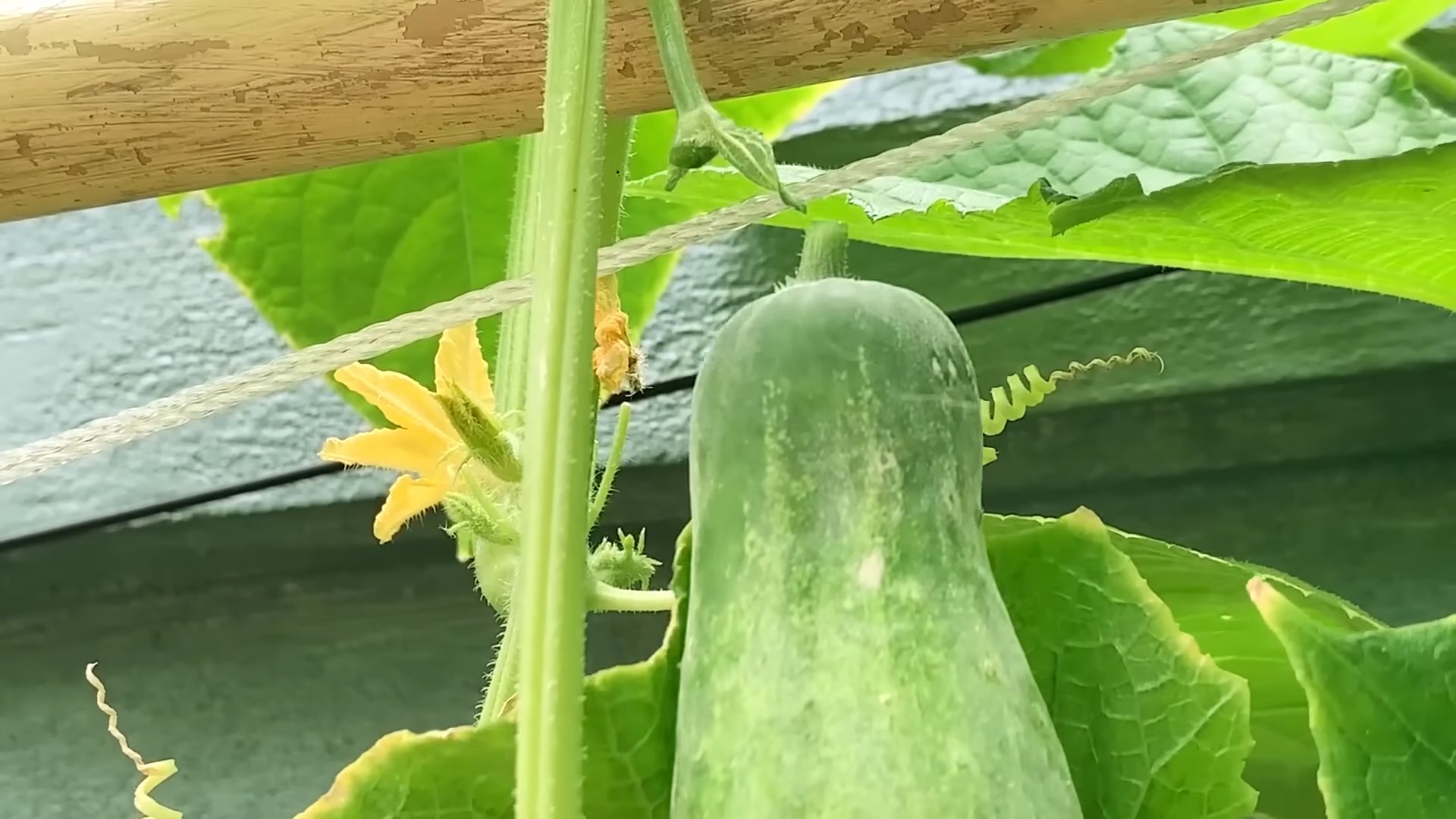
Growing Cucumbers in Small Spaces: A DIY Vertical Garden Guide
Hey there, fellow gardening enthusiasts! Dreaming of fresh, crisp cucumbers but short on space? Don’t worry, I’ve got you covered! I’m going to walk you through creating a DIY vertical cucumber garden that’s perfect for balconies, patios, or even small backyards. This method not only saves space but also improves air circulation, reduces soil-borne diseases, and makes harvesting a breeze. Let’s get started!
What You’ll Need:
Before we dive in, let’s gather our supplies. This project is relatively inexpensive and uses materials you might already have lying around.
* **Cucumber Seeds or Seedlings:** Choose a bush or compact variety specifically bred for containers. I personally love ‘Spacemaster’ and ‘Bush Champion’ for their prolific yields and manageable size.
* **Large Container(s):** Aim for at least 10-15 gallons per plant. Fabric pots are excellent because they allow for good drainage and aeration.
* **Potting Mix:** Use a high-quality potting mix that’s well-draining and rich in organic matter. Avoid using garden soil, as it can compact and hinder root growth.
* **Trellis or Support Structure:** This is crucial for vertical growing. You can use a pre-made trellis, build your own from bamboo stakes and twine, or repurpose an old ladder or pallet.
* **Twine or Plant Ties:** For training the cucumber vines to the trellis.
* **Watering Can or Hose:** For regular watering.
* **Fertilizer:** A balanced, water-soluble fertilizer or slow-release fertilizer formulated for vegetables.
* **Hand Trowel:** For planting.
* **Gloves:** To keep your hands clean.
* **Measuring Tape:** To ensure proper spacing.
* **Scissors or Pruning Shears:** For trimming and harvesting.
Choosing the Right Cucumber Variety
Not all cucumbers are created equal, especially when it comes to small-space gardening. Here’s what to look for:
* **Bush or Compact Varieties:** These varieties are specifically bred to be smaller and more manageable than traditional vining cucumbers. They’re perfect for containers and vertical growing.
* **Disease Resistance:** Choose varieties that are resistant to common cucumber diseases like powdery mildew and downy mildew. This will save you a lot of headaches down the road.
* **Days to Maturity:** Consider the days to maturity, especially if you have a short growing season. Shorter maturity times mean you’ll be harvesting cucumbers sooner.
Building Your Vertical Support System
This is where you get to be creative! The type of support system you choose will depend on your space, budget, and personal preference. Here are a few ideas:
* **Pre-Made Trellis:** These are readily available at garden centers and come in various sizes and styles. They’re easy to install and provide instant support for your cucumber vines.
* **DIY Bamboo Trellis:** This is a budget-friendly option that’s also aesthetically pleasing. Simply gather bamboo stakes and tie them together with twine to create a teepee or A-frame structure.
* **Repurposed Ladder or Pallet:** Give an old ladder or pallet a new life by using it as a vertical support. Just make sure it’s sturdy and can support the weight of the cucumber vines and fruits.
* **Netting:** You can stretch netting between two posts or attach it to a wall to create a climbing surface.
Step-by-Step Instructions: Planting Your Cucumbers
Alright, let’s get our hands dirty! Here’s how to plant your cucumbers in your container garden:
1. **Prepare the Container:** Fill your container with the high-quality potting mix, leaving a few inches of space at the top.
2. **Plant the Seeds or Seedlings:** If you’re starting from seeds, sow them directly into the potting mix, following the instructions on the seed packet. If you’re using seedlings, gently remove them from their containers and plant them in the potting mix, spacing them according to the variety’s recommendations. I usually plant 2-3 seedlings per large container.
3. **Water Thoroughly:** Water the newly planted seeds or seedlings thoroughly, making sure the potting mix is evenly moist.
4. **Install the Trellis:** Position your chosen trellis or support structure behind the container, making sure it’s securely anchored.
5. **Train the Vines:** As the cucumber vines grow, gently guide them towards the trellis and use twine or plant ties to secure them. This will encourage them to climb vertically.
Caring for Your Vertical Cucumber Garden
Now that your cucumbers are planted, it’s time to provide them with the care they need to thrive.
1. **Watering:** Cucumbers need consistent moisture, especially during hot weather. Water deeply whenever the top inch of soil feels dry to the touch. Avoid overhead watering, as this can promote fungal diseases. Drip irrigation or soaker hoses are ideal for delivering water directly to the roots.
2. **Fertilizing:** Feed your cucumbers regularly with a balanced, water-soluble fertilizer or slow-release fertilizer. Follow the instructions on the fertilizer package. I usually fertilize every 2-3 weeks.
3. **Sunlight:** Cucumbers need at least 6-8 hours of sunlight per day. Choose a location that receives plenty of sun.
4. **Pruning:** Prune away any yellowing or diseased leaves to improve air circulation and prevent the spread of disease. You can also prune the tips of the vines to encourage branching and more fruit production.
5. **Pest Control:** Keep an eye out for common cucumber pests like aphids, cucumber beetles, and squash bugs. You can control these pests with insecticidal soap, neem oil, or by handpicking them off the plants.
6. **Pollination:** Cucumbers need to be pollinated in order to produce fruit. If you’re growing your cucumbers indoors or in a location with limited bee activity, you may need to hand-pollinate them. To do this, use a small paintbrush to transfer pollen from the male flowers to the female flowers. Female flowers have a small cucumber-like structure behind the flower, while male flowers do not.
Troubleshooting Common Problems
Even with the best care, you might encounter some challenges along the way. Here are a few common problems and how to address them:
* **Yellowing Leaves:** This can be caused by overwatering, underwatering, nutrient deficiencies, or disease. Check the soil moisture, fertilize if necessary, and inspect the leaves for signs of disease.
* **Powdery Mildew:** This fungal disease appears as a white, powdery coating on the leaves. Improve air circulation, avoid overhead watering, and treat with a fungicide if necessary.
* **Lack of Fruit:** This can be caused by poor pollination, nutrient deficiencies, or stress. Make sure your cucumbers are getting enough sunlight, water, and fertilizer. Hand-pollinate if necessary.
* **Bitter Cucumbers:** This can be caused by inconsistent watering, high temperatures, or stress. Water regularly and provide shade during the hottest part of the day.
Harvesting Your Cucumbers
The moment you’ve been waiting for! Cucumbers are typically ready to harvest 50-70 days after planting, depending on the variety.
* **Harvest when the cucumbers are the desired size and color.** Check your seed packet for specific harvesting guidelines.
* **Use a sharp knife or pruning shears to cut the cucumbers from the vine.** Be careful not to damage the plant.
* **Harvest regularly to encourage continued fruit production.** Overripe cucumbers can become bitter and will slow down the produ
Hey there, fellow gardening enthusiasts! Dreaming of fresh, crisp cucumbers but short on space? Don’t worry, I’ve got you covered! I’m going to walk you through creating a DIY vertical cucumber garden that’s perfect for balconies, patios, or even small backyards. This method not only saves space but also improves air circulation, reduces soil-borne diseases, and makes harvesting a breeze. Let’s get started!
What You’ll Need:
Before we dive in, let’s gather our supplies. This project is relatively inexpensive and uses materials you might already have lying around.
* **Cucumber Seeds or Seedlings:** Choose a bush or compact variety specifically bred for containers. I personally love ‘Spacemaster’ and ‘Bush Champion’ for their prolific yields and manageable size.
* **Large Container(s):** Aim for at least 10-15 gallons per plant. Fabric pots are excellent because they allow for good drainage and aeration.
* **Potting Mix:** Use a high-quality potting mix that’s well-draining and rich in organic matter. Avoid using garden soil, as it can compact and hinder root growth.
* **Trellis or Support Structure:** This is crucial for vertical growing. You can use a pre-made trellis, build your own from bamboo stakes and twine, or repurpose an old ladder or pallet.
* **Twine or Plant Ties:** For training the cucumber vines to the trellis.
* **Watering Can or Hose:** For regular watering.
* **Fertilizer:** A balanced, water-soluble fertilizer or slow-release fertilizer formulated for vegetables.
* **Hand Trowel:** For planting.
* **Gloves:** To keep your hands clean.
* **Measuring Tape:** To ensure proper spacing.
* **Scissors or Pruning Shears:** For trimming and harvesting.
Choosing the Right Cucumber Variety
Not all cucumbers are created equal, especially when it comes to small-space gardening. Here’s what to look for:
* **Bush or Compact Varieties:** These varieties are specifically bred to be smaller and more manageable than traditional vining cucumbers. They’re perfect for containers and vertical growing.
* **Disease Resistance:** Choose varieties that are resistant to common cucumber diseases like powdery mildew and downy mildew. This will save you a lot of headaches down the road.
* **Days to Maturity:** Consider the days to maturity, especially if you have a short growing season. Shorter maturity times mean you’ll be harvesting cucumbers sooner.
Building Your Vertical Support System
This is where you get to be creative! The type of support system you choose will depend on your space, budget, and personal preference. Here are a few ideas:
* **Pre-Made Trellis:** These are readily available at garden centers and come in various sizes and styles. They’re easy to install and provide instant support for your cucumber vines.
* **DIY Bamboo Trellis:** This is a budget-friendly option that’s also aesthetically pleasing. Simply gather bamboo stakes and tie them together with twine to create a teepee or A-frame structure.
* **Repurposed Ladder or Pallet:** Give an old ladder or pallet a new life by using it as a vertical support. Just make sure it’s sturdy and can support the weight of the cucumber vines and fruits.
* **Netting:** You can stretch netting between two posts or attach it to a wall to create a climbing surface.
Step-by-Step Instructions: Planting Your Cucumbers
Alright, let’s get our hands dirty! Here’s how to plant your cucumbers in your container garden:
1. **Prepare the Container:** Fill your container with the high-quality potting mix, leaving a few inches of space at the top.
2. **Plant the Seeds or Seedlings:** If you’re starting from seeds, sow them directly into the potting mix, following the instructions on the seed packet. If you’re using seedlings, gently remove them from their containers and plant them in the potting mix, spacing them according to the variety’s recommendations. I usually plant 2-3 seedlings per large container.
3. **Water Thoroughly:** Water the newly planted seeds or seedlings thoroughly, making sure the potting mix is evenly moist.
4. **Install the Trellis:** Position your chosen trellis or support structure behind the container, making sure it’s securely anchored.
5. **Train the Vines:** As the cucumber vines grow, gently guide them towards the trellis and use twine or plant ties to secure them. This will encourage them to climb vertically.
Caring for Your Vertical Cucumber Garden
Now that your cucumbers are planted, it’s time to provide them with the care they need to thrive.
1. **Watering:** Cucumbers need consistent moisture, especially during hot weather. Water deeply whenever the top inch of soil feels dry to the touch. Avoid overhead watering, as this can promote fungal diseases. Drip irrigation or soaker hoses are ideal for delivering water directly to the roots.
2. **Fertilizing:** Feed your cucumbers regularly with a balanced, water-soluble fertilizer or slow-release fertilizer. Follow the instructions on the fertilizer package. I usually fertilize every 2-3 weeks.
3. **Sunlight:** Cucumbers need at least 6-8 hours of sunlight per day. Choose a location that receives plenty of sun.
4. **Pruning:** Prune away any yellowing or diseased leaves to improve air circulation and prevent the spread of disease. You can also prune the tips of the vines to encourage branching and more fruit production.
5. **Pest Control:** Keep an eye out for common cucumber pests like aphids, cucumber beetles, and squash bugs. You can control these pests with insecticidal soap, neem oil, or by handpicking them off the plants.
6. **Pollination:** Cucumbers need to be pollinated in order to produce fruit. If you’re growing your cucumbers indoors or in a location with limited bee activity, you may need to hand-pollinate them. To do this, use a small paintbrush to transfer pollen from the male flowers to the female flowers. Female flowers have a small cucumber-like structure behind the flower, while male flowers do not.
Troubleshooting Common Problems
Even with the best care, you might encounter some challenges along the way. Here are a few common problems and how to address them:
* **Yellowing Leaves:** This can be caused by overwatering, underwatering, nutrient deficiencies, or disease. Check the soil moisture, fertilize if necessary, and inspect the leaves for signs of disease.
* **Powdery Mildew:** This fungal disease appears as a white, powdery coating on the leaves. Improve air circulation, avoid overhead watering, and treat with a fungicide if necessary.
* **Lack of Fruit:** This can be caused by poor pollination, nutrient deficiencies, or stress. Make sure your cucumbers are getting enough sunlight, water, and fertilizer. Hand-pollinate if necessary.
* **Bitter Cucumbers:** This can be caused by inconsistent watering, high temperatures, or stress. Water regularly and provide shade during the hottest part of the day.
Harvesting Your Cucumbers
The moment you’ve been waiting for! Cucumbers are typically ready to harvest 50-70 days after planting, depending on the variety.
* **Harvest when the cucumbers are the desired size and color.** Check your seed packet for specific harvesting guidelines.
* **Use a sharp knife or pruning shears to cut the cucumbers from the vine.** Be careful not to damage the plant.
* **Harvest regularly to encourage continued fruit production.** Overripe cucumbers can become bitter and will slow down the production of new fruits.
Extending Your Cucumber Season
Want to enjoy fresh cucumbers for as long as possible? Here are a few tips for extending your growing season:
* **Start seeds indoors:** Start your cucumber seeds indoors 4-6 weeks before the last expected frost. This will give you a head start on the growing season.
* **Use row covers:** Row covers can protect your plants from frost and extend the growing season by several weeks.
* **Succession planting:** Plant new cucumber seeds or seedlings every few weeks to ensure a continuous harvest throughout the season.
* **Choose cold-tolerant varieties:** Some cucumber varieties are more cold-tolerant than others. Look for varieties that are specifically bred for cooler climates.
Enjoying Your Harvest
Congratulations! You’ve successfully grown cucumbers in a small space. Now it’s time to enjoy the fruits (or rather, vegetables) of your labor.
* **Eat them fresh:** Nothing beats the taste of a freshly picked cucumber. Slice them up and add them to salads, sandwiches, or enjoy them as a snack.
* **Make pickles:** Pickling cucumbers is a great way to preserve them for later. There are countless pickle recipes to choose from, from classic dill pickles to sweet bread and butter pickles.
* **Add them to smoothies:** Cucumbers add a refreshing and hydrating boost to smoothies.
* **Share them with friends and neighbors:** Spread the joy of homegrown cucumbers by sharing your harvest with others.
Growing cucumbers in small spaces is totally achievable with a little planning and effort. I hope this guide
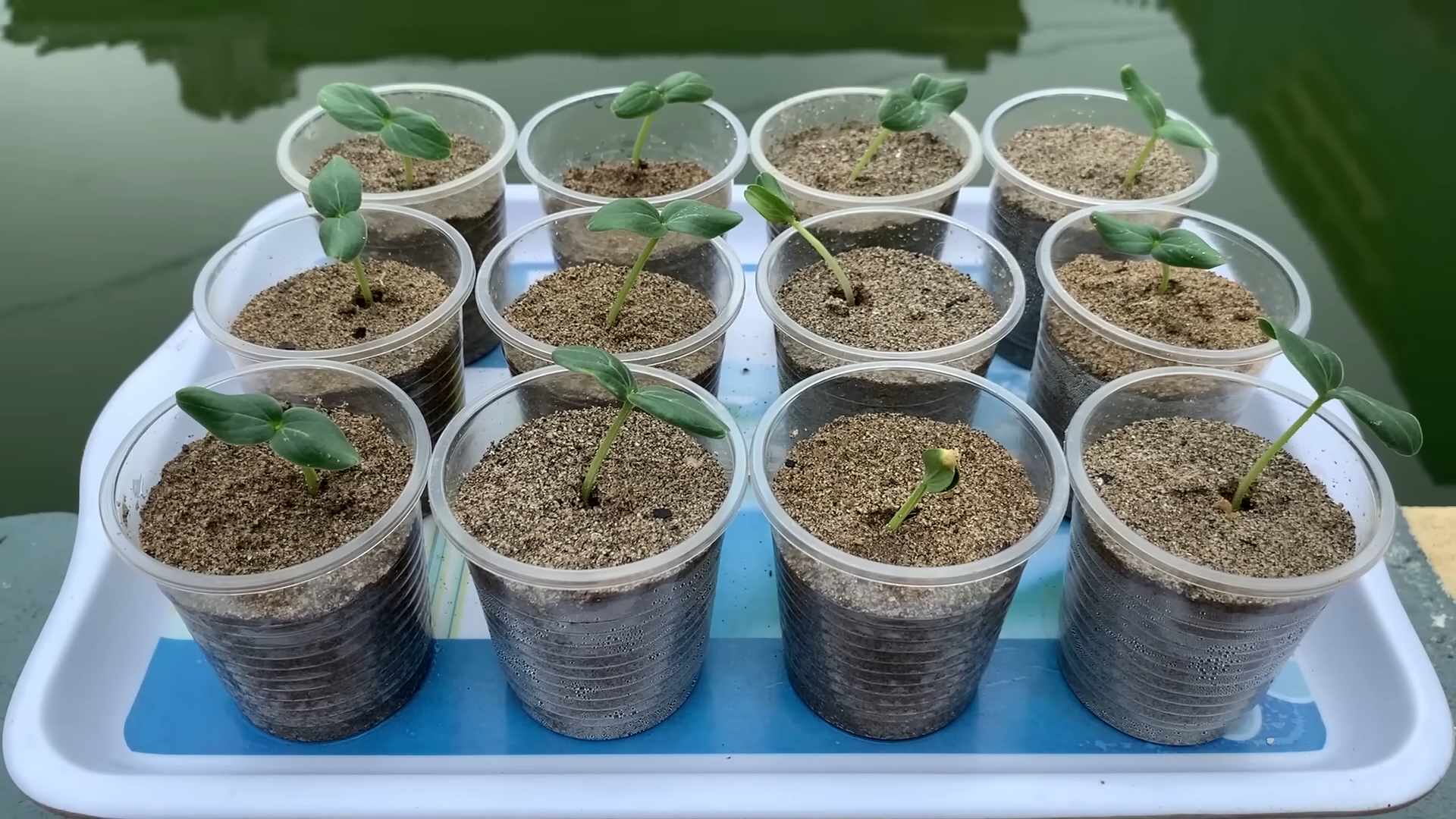
Conclusion
So, there you have it! Growing cucumbers in small spaces isn’t just a pipe dream; it’s an achievable reality with a little ingenuity and the right approach. We’ve explored how vertical gardening, container selection, and strategic pruning can transform even the tiniest balcony or patio into a thriving cucumber patch.
Why is this DIY trick a must-try? Because it empowers you to enjoy fresh, crisp cucumbers straight from your “garden,” regardless of your living situation. Imagine the satisfaction of harvesting your own produce, knowing exactly where it came from and what went into its cultivation. No more bland, store-bought cucumbers; instead, you’ll have flavorful, homegrown delights to add to your salads, sandwiches, or even enjoy as a refreshing snack.
Beyond the sheer joy of gardening, this method is incredibly space-efficient. Vertical gardening, in particular, maximizes your growing area, allowing you to cultivate more plants in a smaller footprint. This is especially beneficial for apartment dwellers or anyone with limited outdoor space. Plus, container gardening gives you complete control over the soil quality and growing conditions, ensuring your cucumbers receive the nutrients they need to flourish.
Looking for variations? Consider experimenting with different cucumber varieties. Bush cucumbers are naturally more compact and well-suited for container gardening. You could also try pickling cucumbers for a continuous supply of crunchy snacks. Another variation is to integrate companion planting. Marigolds, for example, can deter pests, while dill attracts beneficial insects. These additions not only enhance your cucumber yield but also create a more vibrant and diverse garden ecosystem. You can also explore different trellising methods. A simple bamboo stake trellis works well, but you could also get creative with repurposed materials like old ladders or pallets. The possibilities are endless!
But the real magic happens when you personalize this DIY trick to suit your specific needs and preferences. Don’t be afraid to experiment with different container sizes, soil mixes, and trellising techniques. Observe your plants closely and adjust your approach as needed. Remember, gardening is a journey of learning and discovery.
We wholeheartedly encourage you to give this DIY trick a try. It’s a rewarding and sustainable way to enjoy fresh cucumbers, even in the most limited of spaces. And most importantly, we want to hear about your experiences! Share your photos, tips, and challenges in the comments below. Let’s create a community of small-space cucumber growers and inspire others to embrace the joys of urban gardening. Tell us what worked for you, what didn’t, and any creative solutions you came up with along the way. Your insights could be invaluable to someone just starting out. So, grab your seeds, pots, and trellises, and let’s get growing! Remember, even a small space can yield a bountiful harvest with a little bit of effort and a whole lot of love. Let’s all learn how to **grow cucumbers small spaces** together!
Frequently Asked Questions (FAQ)
What is the best cucumber variety to grow in a small space?
The best cucumber varieties for small spaces are typically bush or compact varieties. These types of cucumbers are bred to be more contained and less sprawling than traditional vining cucumbers. Some excellent choices include:
* **Bush Champion:** This variety is known for its high yields and compact size, making it perfect for containers.
* **Spacemaster:** As the name suggests, Spacemaster is specifically bred for small gardens and containers. It produces dark green, flavorful cucumbers.
* **Patio Snacker:** This variety is ideal for snacking and produces small, crisp cucumbers on compact plants.
* **Salad Bush:** This variety is another great option for containers, producing medium-sized cucumbers perfect for salads.
When selecting a variety, consider your personal preferences for taste, size, and intended use (e.g., pickling, slicing).
What size container do I need to grow cucumbers?
Cucumbers need a decent amount of space for their roots to develop properly. A minimum container size of 5 gallons is recommended, but a 10-gallon container is even better. The larger the container, the more room the roots have to grow, and the less frequently you’ll need to water. Ensure the container has adequate drainage holes to prevent waterlogging.
How often should I water my container cucumbers?
Container cucumbers require consistent watering, especially during hot weather. Check the soil moisture daily, and water when the top inch feels dry to the touch. Water deeply until water drains out of the bottom of the container. Avoid overhead watering, as this can promote fungal diseases. Aim to water in the morning to allow the foliage to dry before nightfall.
What type of soil is best for growing cucumbers in containers?
A well-draining, nutrient-rich potting mix is essential for growing healthy cucumbers in containers. Avoid using garden soil, as it can become compacted and doesn’t drain well. A good potting mix should contain a blend of peat moss, perlite, and vermiculite. You can also amend the potting mix with compost or aged manure to provide additional nutrients.
Do cucumbers need full sun?
Yes, cucumbers need at least 6-8 hours of direct sunlight per day to thrive. Choose a location for your container cucumbers that receives ample sunlight. If you live in a particularly hot climate, some afternoon shade may be beneficial to prevent the plants from overheating.
How do I trellis cucumbers in a small space?
Vertical gardening is key to growing cucumbers in small spaces. There are several trellising options you can use:
* **Bamboo Stakes:** Simple and inexpensive, bamboo stakes can be arranged in a teepee shape or used to create a vertical support system.
* **Tomato Cages:** While designed for tomatoes, tomato cages can also be used to support cucumber vines.
* **Trellis Netting:** Attach netting to a frame or wall to provide a climbing surface for the cucumbers.
* **Repurposed Materials:** Get creative and use old ladders, pallets, or other repurposed materials to create a unique trellis.
So, there you have it! Growing cucumbers in small spaces isn’t just a pipe dream; it’s an achievable reality with a little ingenuity and the right approach. We’ve explored how vertical gardening, container selection, and strategic pruning can transform even the tiniest balcony or patio into a thriving cucumber patch.
Why is this DIY trick a must-try? Because it empowers you to enjoy fresh, crisp cucumbers straight from your “garden,” regardless of your living situation. Imagine the satisfaction of harvesting your own produce, knowing exactly where it came from and what went into its cultivation. No more bland, store-bought cucumbers; instead, you’ll have flavorful, homegrown delights to add to your salads, sandwiches, or even enjoy as a refreshing snack.
Beyond the sheer joy of gardening, this method is incredibly space-efficient. Vertical gardening, in particular, maximizes your growing area, allowing you to cultivate more plants in a smaller footprint. This is especially beneficial for apartment dwellers or anyone with limited outdoor space. Plus, container gardening gives you complete control over the soil quality and growing conditions, ensuring your cucumbers receive the nutrients they need to flourish.
Looking for variations? Consider experimenting with different cucumber varieties. Bush cucumbers are naturally more compact and well-suited for container gardening. You could also try pickling cucumbers for a continuous supply of crunchy snacks. Another variation is to integrate companion planting. Marigolds, for example, can deter pests, while dill attracts beneficial insects. These additions not only enhance your cucumber yield but also create a more vibrant and diverse garden ecosystem. You can also explore different trellising methods. A simple bamboo stake trellis works well, but you could also get creative with repurposed materials like old ladders or pallets. The possibilities are endless!
But the real magic happens when you personalize this DIY trick to suit your specific needs and preferences. Don’t be afraid to experiment with different container sizes, soil mixes, and trellising techniques. Observe your plants closely and adjust your approach as needed. Remember, gardening is a journey of learning and discovery.
We wholeheartedly encourage you to give this DIY trick a try. It’s a rewarding and sustainable way to enjoy fresh cucumbers, even in the most limited of spaces. And most importantly, we want to hear about your experiences! Share your photos, tips, and challenges in the comments below. Let’s create a community of small-space cucumber growers and inspire others to embrace the joys of urban gardening. Tell us what worked for you, what didn’t, and any creative solutions you came up with along the way. Your insights could be invaluable to someone just starting out. So, grab your seeds, pots, and trellises, and let’s get growing! Remember, even a small space can yield a bountiful harvest with a little bit of effort and a whole lot of love. Let’s all learn how to **grow cucumbers small spaces** together!
Frequently Asked Questions (FAQ)
What is the best cucumber variety to grow in a small space?
The best cucumber varieties for small spaces are typically bush or compact varieties. These types of cucumbers are bred to be more contained and less sprawling than traditional vining cucumbers. Some excellent choices include:
* **Bush Champion:** This variety is known for its high yields and compact size, making it perfect for containers.
* **Spacemaster:** As the name suggests, Spacemaster is specifically bred for small gardens and containers. It produces dark green, flavorful cucumbers.
* **Patio Snacker:** This variety is ideal for snacking and produces small, crisp cucumbers on compact plants.
* **Salad Bush:** This variety is another great option for containers, producing medium-sized cucumbers perfect for salads.
When selecting a variety, consider your personal preferences for taste, size, and intended use (e.g., pickling, slicing).
What size container do I need to grow cucumbers?
Cucumbers need a decent amount of space for their roots to develop properly. A minimum container size of 5 gallons is recommended, but a 10-gallon container is even better. The larger the container, the more room the roots have to grow, and the less frequently you’ll need to water. Ensure the container has adequate drainage holes to prevent waterlogging.
How often should I water my container cucumbers?
Container cucumbers require consistent watering, especially during hot weather. Check the soil moisture daily, and water when the top inch feels dry to the touch. Water deeply until water drains out of the bottom of the container. Avoid overhead watering, as this can promote fungal diseases. Aim to water in the morning to allow the foliage to dry before nightfall.
What type of soil is best for growing cucumbers in containers?
A well-draining, nutrient-rich potting mix is essential for growing healthy cucumbers in containers. Avoid using garden soil, as it can become compacted and doesn’t drain well. A good potting mix should contain a blend of peat moss, perlite, and vermiculite. You can also amend the potting mix with compost or aged manure to provide additional nutrients.
Do cucumbers need full sun?
Yes, cucumbers need at least 6-8 hours of direct sunlight per day to thrive. Choose a location for your container cucumbers that receives ample sunlight. If you live in a particularly hot climate, some afternoon shade may be beneficial to prevent the plants from overheating.
How do I trellis cucumbers in a small space?
Vertical gardening is key to growing cucumbers in small spaces. There are several trellising options you can use:
* **Bamboo Stakes:** Simple and inexpensive, bamboo stakes can be arranged in a teepee shape or used to create a vertical support system.
* **Tomato Cages:** While designed for tomatoes, tomato cages can also be used to support cucumber vines.
* **Trellis Netting:** Attach netting to a frame or wall to provide a climbing surface for the cucumbers.
* **Repurposed Materials:** Get creative and use old ladders, pallets, or other repurposed materials to create a unique trellis.
Ensure the trellis is sturdy enough to support the weight of the mature cucumber vines and fruits.
How do I prune cucumbers in containers?
Pruning cucumbers can help improve air circulation, reduce disease, and encourage fruit production. Remove any yellowing or dead leaves. You can also prune suckers (small shoots that grow from the base of the plant) to direct the plant’s energy towards fruit production. For vining cucumbers, you may need to prune the main vine to control its length.
What are common pests and diseases that affect cucumbers?
Common pests that affect cucumbers include aphids, cucumber beetles, and squash bugs. Common diseases include powdery mildew, downy mildew, and bacterial wilt. Regularly inspect your plants for signs of pests or diseases. Use organic pest control methods, such as insecticidal soap or neem oil, to control pests. Ensure good air circulation and avoid overhead watering to prevent diseases.
How long does it take for cucumbers to mature?
The time it takes for cucumbers to mature depends on the variety and growing conditions. Generally, cucumbers are ready to harvest 50-70 days after planting. Check the seed packet or plant tag for specific information on the maturity time for your chosen variety.
How do I know when to harvest cucumbers?
Harvest cucumbers when they reach the desired size and color for the variety you are growing. Overripe cucumbers can become bitter and seedy. Regularly check your plants for ripe cucumbers and harvest them promptly to encourage continued fruit production.

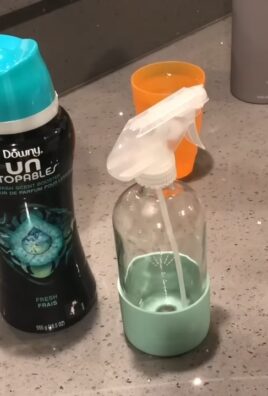
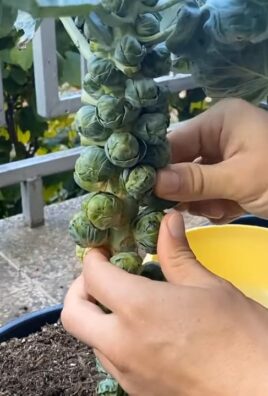
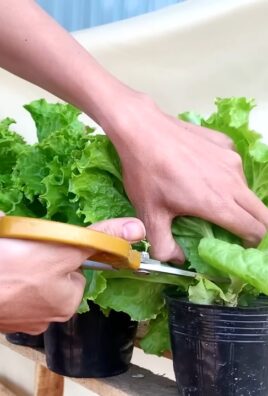
Leave a Comment